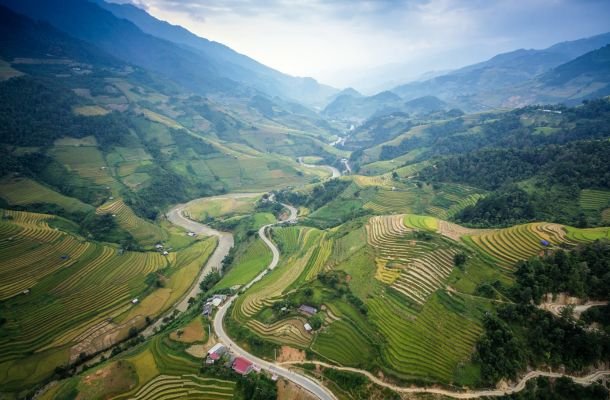Geography of Columbia, SC

Columbia, the capital city of South Carolina, is a region rich in geographic diversity, offering a blend of natural beauty, urban development, and historical significance. Located at the heart of the state, Columbia’s geography has played a pivotal role in shaping its culture, economy, and environment. This guide explores the city’s physical landscape, climate, ecosystems, and the various ways these elements contribute to life in Columbia.
Overview of Columbia’s Geography
Columbia, located near the geographic center of South Carolina, serves as the state capital and a hub for culture, education, and commerce. The city is situated within the Piedmont region, characterized by gently rolling hills and a gradual elevation change as one moves toward the Appalachian Mountains to the northwest. Columbia’s location has historically made it a strategic site, particularly as a transportation and trade center, owing to its proximity to major rivers and its role as a crossroads in the state’s road network.
Topography and Landscape
Columbia’s topography is a defining feature of the city’s geography, marked by its placement between the Piedmont Plateau and the Coastal Plain. This positioning gives Columbia a unique landscape that includes both hilly terrain and flat expanses.
Piedmont Plateau
The Piedmont Plateau, which covers much of the northern part of Columbia, is characterized by rolling hills and fertile soil, which have historically supported agriculture and settlement. This region, part of a larger geological formation that extends from New York to Alabama, is underlain by ancient crystalline rocks, which have weathered over millions of years to create the current landscape. In Columbia, the Piedmont’s elevation gradually decreases as it transitions to the Sandhills region, making the city a gateway between the mountains and the coast.
Sandhills Region
The Sandhills, a distinctive geological feature in Columbia, are remnants of ancient coastal dunes from a time when sea levels were much higher. These sandy soils are less fertile than those of the Piedmont, which has influenced land use in the area. The Sandhills create a natural boundary between the Piedmont and the Coastal Plain, and their presence is a reminder of the city’s ancient past when it was much closer to the coastline. This region is now home to a variety of ecosystems, including longleaf pine forests, which are well adapted to the sandy soils.
Congaree River
One of the most prominent geographic features of Columbia is the Congaree River, which flows along the western edge of the city. Formed by the confluence of the Saluda and Broad Rivers, the Congaree River is a critical natural resource, providing water for the city, a habitat for wildlife, and a recreational area for residents and visitors. The river’s floodplain, which is part of the larger Congaree National Park to the southeast of Columbia, is a significant ecological area, known for its rich biodiversity and old-growth bottomland hardwood forests.
Climate of Columbia
Columbia experiences a humid subtropical climate, characterized by hot, humid summers and mild to cool winters. The city’s climate is influenced by its geographic location, with the Appalachian Mountains to the northwest and the Atlantic Ocean to the southeast, both of which play roles in shaping local weather patterns.
Seasonal Variations
The climate in Columbia varies significantly with the seasons:
- Summer: Summers in Columbia are typically hot and humid, with average high temperatures in July often exceeding 90°F (32°C). The heat is exacerbated by high humidity levels, which can make it feel even hotter. Thunderstorms are common in the summer months, often providing relief from the intense heat.
- Winter: Winters are mild, with average low temperatures in January hovering around 34°F (1°C). Snowfall is rare but not unheard of, with the city typically seeing light snowfalls a few times each decade. Winters are generally short, and cold spells are brief.
- Spring and Fall: These transitional seasons are marked by moderate temperatures and lower humidity. Spring is particularly beautiful in Columbia, with blooming flowers and trees, while fall is noted for its colorful foliage.
Impact on Lifestyle and Economy
The climate of Columbia plays a crucial role in the lifestyle and economy of the region. The hot summers make air conditioning a necessity, influencing energy consumption patterns. The mild winters allow for a longer growing season, which benefits local agriculture, particularly the cultivation of crops like peaches and pecans. The climate also affects outdoor activities and tourism, with spring and fall being particularly popular for festivals, outdoor events, and visiting the city’s parks and gardens.
Natural Resources and Wildlife
Columbia is rich in natural resources and wildlife, with its diverse ecosystems ranging from riverine habitats to upland forests. The city’s natural environment is an integral part of its identity, providing both recreational opportunities and ecological benefits.
Flora and Fauna
The flora and fauna of Columbia are diverse, reflecting the city’s varied habitats:
- Flora: Columbia’s plant life includes a mix of deciduous and evergreen species. In the upland areas, forests of oak, hickory, and pine are common, while the floodplains and riverbanks are dominated by species such as cypress, sycamore, and sweetgum. The Sandhills region supports longleaf pine forests, which are adapted to the sandy soils and frequent fires.
- Fauna: The city’s wildlife is equally diverse, with common species including white-tailed deer, raccoons, and a variety of bird species such as hawks, owls, and woodpeckers. The rivers and wetlands are home to species like beavers, otters, and numerous fish species, including bass and catfish.
Parks and Natural Reserves
Columbia is home to several parks and natural reserves that protect its rich biodiversity and provide residents with opportunities to enjoy the outdoors:
- Congaree National Park: Located just southeast of Columbia, this park is one of the most significant natural areas in the region, preserving one of the largest intact tracts of old-growth bottomland hardwood forest in the United States. The park is known for its towering trees, including some of the tallest in the eastern U.S., and its rich biodiversity, including numerous bird, amphibian, and plant species.
- Riverbanks Zoo and Garden: This popular attraction features both a zoo and botanical garden, showcasing a wide range of animal species and plant collections. The zoo is located along the banks of the Saluda River, offering a unique blend of natural beauty and educational exhibits.
- Harbison State Forest: A large urban forest located just outside Columbia, Harbison offers miles of trails for hiking, biking, and wildlife viewing. The forest is a popular spot for outdoor recreation, with its diverse habitats providing a home for many species of plants and animals.
Geological History of Columbia
The geological history of Columbia is complex, reflecting the city’s location at the boundary between the Piedmont and Coastal Plain regions. This history has shaped the city’s landscape, influencing everything from its topography to its natural resources.
Formation of the Piedmont
The Piedmont region, which covers much of Columbia, is one of the oldest geological formations in the eastern United States. The rocks that make up the Piedmont were formed hundreds of millions of years ago during the Paleozoic Era, as ancient continents collided to form the supercontinent Pangaea. This collision caused the formation of the Appalachian Mountains, with the Piedmont representing the eroded remnants of these ancient mountains.
Over time, the rocks of the Piedmont have been weathered and eroded, creating the rolling hills and fertile soils that characterize the region today. The geological history of the Piedmont has also contributed to the presence of valuable minerals, including gold, which was mined in the region during the 19th century.
The Role of Rivers in Shaping the Landscape
Rivers have played a crucial role in shaping the landscape of Columbia. The Congaree, Saluda, and Broad Rivers have all contributed to the erosion and deposition processes that have shaped the city’s topography. The rivers have also created fertile floodplains, which have been important for agriculture and settlement throughout Columbia’s history.
The confluence of the Saluda and Broad Rivers to form the Congaree River is a particularly significant geographic feature, creating a natural point of convergence that has made Columbia a key transportation and trade hub. The presence of these rivers has also influenced the development of the city’s infrastructure, including the construction of bridges, dams, and canals.
Urban Geography and Development
Columbia’s urban geography reflects its historical development as a center of government, education, and commerce. The city’s layout, transportation networks, and landmarks all provide insights into its growth and evolution.
City Planning and Layout
Columbia was one of the first planned cities in the United States, with its layout designed by surveyor John Gabriel Guignard in 1786. The city’s original grid plan, which features wide streets and large blocks, was intended to promote orderly growth and development. The wide streets, some as broad as 150 feet, were designed to prevent the spread of fire, a common concern in the 18th and 19th centuries.
The city’s layout has influenced its development, with the original grid plan still evident in the downtown area. Over time, Columbia has expanded beyond its original boundaries, with suburban development spreading into the surrounding areas. The city’s growth has been driven by its role as the state capital, as well as its position as a center of education, particularly with the presence of the University of South Carolina.
Transportation Networks
Columbia’s transportation networks have played a key role in its development as a regional hub. The city is served by a network of highways, railroads, and an airport, all of which connect it to other parts of South Carolina and the broader southeastern United States.
- Highways: Columbia is intersected by several major highways, including Interstate 20, Interstate 26, and Interstate 77. These highways connect the city to major regional destinations, including Atlanta, Charlotte, and Charleston, making Columbia an important transportation hub.
- Railroads: Railroads have historically been important to Columbia’s economy, with the city serving as a major rail junction in the 19th and early 20th centuries. Today, Columbia is still served by several rail lines, which are used for both freight and passenger services.
- Airport: Columbia Metropolitan Airport (CAE) is the primary airport serving the city, providing flights to several major cities across the United States. The airport is located just outside the city in Lexington County and is an important gateway for both business and leisure travelers.
Significant Landmarks
Columbia is home to several significant landmarks, many of which are tied to its geographic and historical significance:
- South Carolina State House: The State House, located in downtown Columbia, is the seat of government for the state of South Carolina. The building is an architectural landmark, known for its neoclassical design and its role in the state’s political history.
- University of South Carolina: The University of South Carolina, located in the heart of Columbia, is one of the city’s most important institutions. The university’s campus is home to several historic buildings, as well as modern facilities that reflect its status as a leading research institution.
- The Vista: The Vista, a former warehouse district located near the Congaree River, has been transformed into one of Columbia’s most vibrant neighborhoods. The area is known for its restaurants, shops, and cultural attractions, making it a popular destination for both locals and visitors.
Environmental Challenges and Sustainability
Columbia faces several environmental challenges, many of which are tied to its geography and climate. These challenges include flooding, water management, and the need for sustainable development practices.
Flooding and Water Management
Flooding is a significant environmental challenge in Columbia, particularly in areas near the Congaree, Saluda, and Broad Rivers. The city has experienced several major floods in its history, including the devastating flood of October 2015, which caused widespread damage and highlighted the need for improved water management strategies.
To address the risk of flooding, Columbia has implemented a range of measures, including the construction of levees, the development of floodplain management plans, and the improvement of stormwater drainage systems. The city also works closely with state and federal agencies to monitor and manage water levels in the rivers and reservoirs that affect the city.
Sustainable Practices in Columbia
In recent years, Columbia has made significant strides in promoting sustainability and environmental stewardship. These efforts include initiatives to reduce energy consumption, promote recycling, and protect natural resources.
- Green Building: Columbia has embraced green building practices, with several new developments incorporating energy-efficient designs and materials. The city’s commitment to sustainability is reflected in the growth of LEED-certified buildings and the promotion of sustainable construction practices.
- Public Transportation: Columbia’s public transportation system, which includes buses and bike-sharing programs, is designed to reduce the city’s carbon footprint by providing alternatives to car travel. The city is also exploring the expansion of public transit options to better serve residents and reduce traffic congestion.
- Parks and Green Spaces: Columbia’s commitment to preserving natural areas is evident in its extensive network of parks and green spaces. The city has prioritized the protection of natural habitats and the creation of recreational areas that provide environmental benefits and enhance the quality of life for residents.
Conclusion
The geography of Columbia, SC, is a complex and dynamic tapestry of natural landscapes, urban development, and historical significance. From the rolling hills of the Piedmont Plateau to the sandy soils of the Sandhills, the city’s physical environment has shaped its history, culture, and way of life. As Columbia continues to grow and evolve, understanding its geography is essential to appreciating the unique character of the city and the challenges and opportunities it faces. Whether exploring the Congaree River, navigating the city’s historic streets, or engaging in efforts to promote sustainability, the geography of Columbia is a central element of its identity and future.
Find us
Tuesday
Wednesday
Thursday
Friday
Saturday
Sunday
10 am – 10 am
10 am – 10 am
10 am – 10 am
10 am – 10 am
10 am – 10 am
10 am – 10 am






